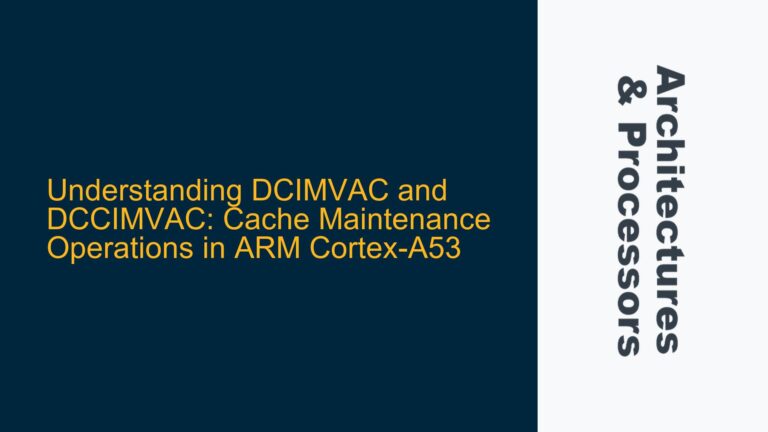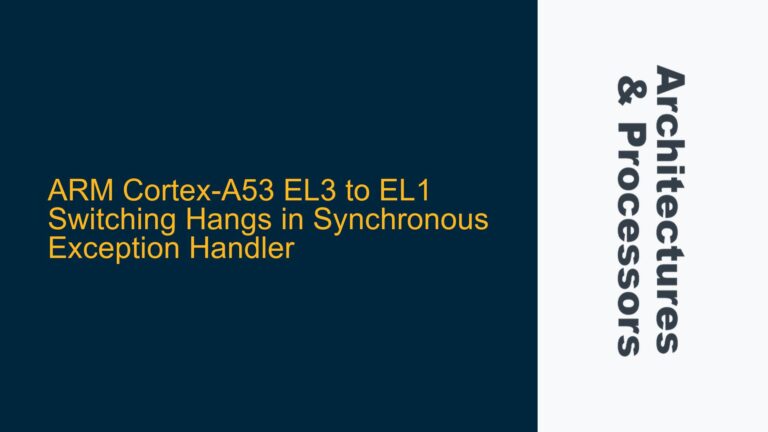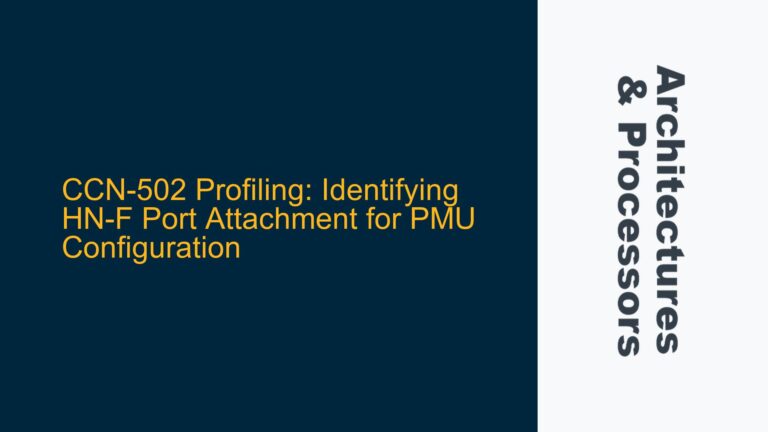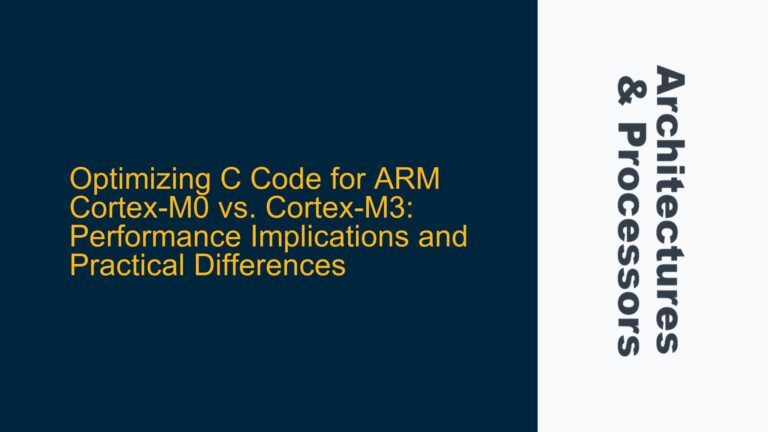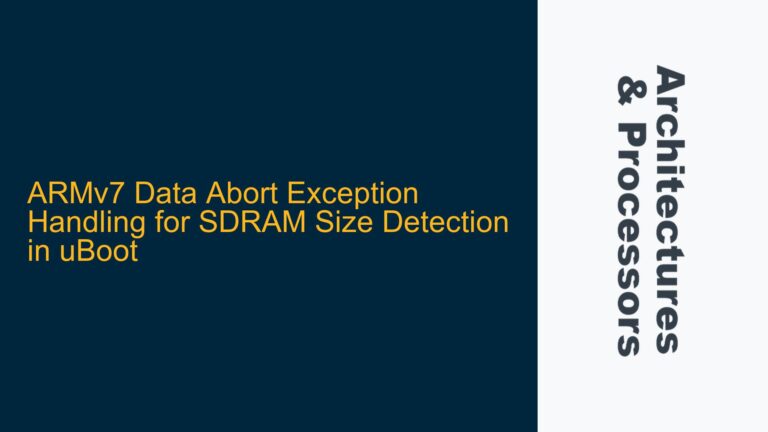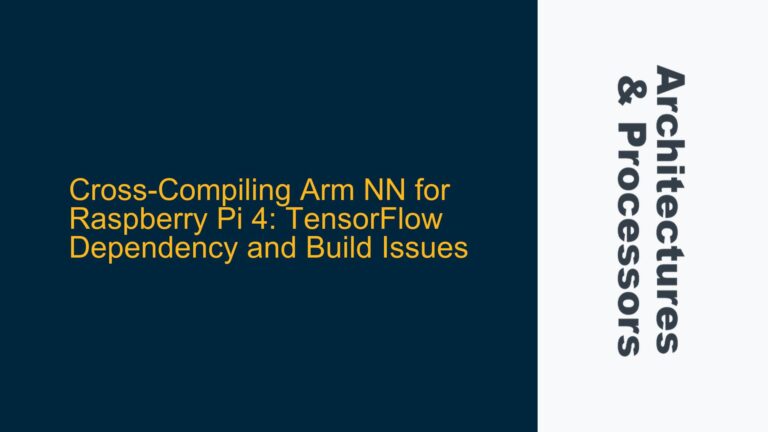ARM NEON Load/Store Instructions and Unaligned Memory Access Behavior
The core issue revolves around the behavior of ARM NEON load/store instructions (vld1q_u32 and vst1q_u32) when accessing unaligned memory addresses. Contrary to expectations, these instructions do not trigger a segmentation fault even when the memory addresses are not aligned to the required boundaries. This behavior is inconsistent with traditional expectations from architectures like x86, where unaligned accesses often result in faults or performance penalties. Understanding this behavior requires a deep dive into the ARM architecture, specifically the NEON SIMD (Single Instruction, Multiple Data) unit, and how it handles memory access.
ARM NEON is an advanced SIMD architecture extension designed to accelerate multimedia and signal processing applications. It operates on 128-bit wide registers and supports operations on multiple data types, including integers and floating-point numbers. The vld1q_u32 and vst1q_u32 intrinsics are used to load and store 128-bit vectors (four 32-bit integers) from and to memory. In the provided code, these intrinsics are used to perform vectorized addition on arrays of 32-bit integers.
The confusion arises because the code accesses memory addresses that are not aligned to 16-byte boundaries, which is the natural alignment for 128-bit NEON registers. In many architectures, such unaligned accesses would result in a segmentation fault or a bus error. However, ARM NEON instructions are designed to handle unaligned memory accesses gracefully, albeit with potential performance penalties. This design choice is rooted in the ARM architecture’s flexibility and its emphasis on reducing the complexity of memory management for developers.
ARMv7 and ARMv8 Alignment Handling: Architectural Differences and Default Behaviors
The behavior of ARM NEON load/store instructions with respect to alignment is influenced by the specific ARM architecture version being used. In ARMv7, the alignment requirements for memory accesses were relaxed compared to earlier versions. This relaxation allows most load/store instructions, including NEON instructions, to operate on unaligned addresses without causing faults. However, this comes with a performance cost, as the processor may need to perform additional memory transactions to handle the unaligned access.
In ARMv8, the architecture further refined its handling of unaligned accesses. The default behavior for most load/store instructions, including NEON, is to support unaligned accesses without generating alignment faults. This is achieved through hardware mechanisms that automatically handle the misalignment, such as splitting the access into multiple aligned transactions or using specialized hardware to handle unaligned data paths. The alignment fault behavior can be controlled via system registers, but the default configuration typically allows unaligned accesses.
The key difference between ARMv7 and ARMv8 lies in the granularity of alignment handling and the performance implications. In ARMv7, unaligned accesses may incur a higher performance penalty due to the need for additional memory cycles. In ARMv8, the hardware is optimized to minimize the performance impact of unaligned accesses, making them more efficient. This architectural evolution reflects ARM’s commitment to simplifying software development while maintaining high performance.
The alignment bit mentioned in the discussion refers to a configuration setting that can enforce strict alignment checking. When this bit is set, the processor will generate an alignment fault for unaligned accesses. However, this bit is typically off by default, allowing unaligned accesses to proceed without faults. This default behavior is consistent across most ARM implementations, including those with NEON support.
Performance Implications and Best Practices for ARM NEON Memory Access
While ARM NEON instructions can handle unaligned memory accesses, developers should be aware of the performance implications and adopt best practices to optimize their code. Unaligned accesses can lead to increased memory latency and reduced throughput, as the processor may need to perform additional memory transactions or use slower data paths. In performance-critical applications, these penalties can significantly impact overall system performance.
To mitigate these issues, developers should strive to align data structures to natural boundaries whenever possible. For NEON operations, this means aligning data to 16-byte boundaries to match the 128-bit register width. Aligning data not only improves performance but also ensures compatibility with other architectures that may have stricter alignment requirements.
In cases where alignment cannot be guaranteed, developers can use techniques such as manual alignment checks and adjustments. For example, before performing a NEON load, the code can check if the address is aligned and adjust it if necessary. This approach adds some overhead but can prevent performance degradation caused by unaligned accesses.
Another best practice is to use ARM’s data synchronization barriers and cache management instructions to ensure data consistency when working with unaligned accesses. These instructions help maintain cache coherency and prevent data corruption, especially in multi-core systems where different cores may access the same memory locations.
In summary, while ARM NEON instructions provide flexibility in handling unaligned memory accesses, developers should be mindful of the performance implications and adopt best practices to optimize their code. Aligning data to natural boundaries, using alignment checks, and leveraging ARM’s synchronization and cache management instructions can help achieve optimal performance and reliability in NEON-based applications.
Implementing Data Alignment and Synchronization in ARM NEON Code
To illustrate the best practices discussed, let’s consider a modified version of the original code that incorporates data alignment and synchronization techniques. The goal is to ensure that NEON load/store operations are performed on aligned addresses, thereby avoiding potential performance penalties and ensuring compatibility with other architectures.
First, we modify the data allocation to ensure that the arrays are aligned to 16-byte boundaries. This can be achieved using platform-specific alignment directives or functions. For example, in C, we can use the aligned_alloc function to allocate aligned memory:
#include <stdlib.h>
#include <stdint.h>
#include <arm_neon.h>
void add(uint32x4_t *data_a, uint32x4_t *data_b) {
*data_a = vaddq_u32(*data_a, *data_b);
}
int main(int argc, char** argv) {
unsigned int n = atoi(argv[1]);
// Allocate aligned memory for the arrays
uint32_t *uint32_data_a = (uint32_t *)aligned_alloc(16, n * sizeof(uint32_t));
uint32_t *uint32_data_b = (uint32_t *)aligned_alloc(16, n * sizeof(uint32_t));
uint32_t *uint32_data_c = (uint32_t *)aligned_alloc(16, n * sizeof(uint32_t));
// Initialize the arrays
for (uint32_t i = 0; i < n; i++) {
uint32_data_a[i] = i;
uint32_data_b[i] = i;
uint32_data_c[i] = i;
}
// Perform NEON operations
uint32x4_t data_a, data_b;
for (int count = 0; count < 10; count++) {
for (int i = 0; i < n; i += 4) {
// Load aligned data into NEON registers
data_a = vld1q_u32(uint32_data_a + i);
data_b = vld1q_u32(uint32_data_b + i);
// Perform vector addition
add(&data_a, &data_b);
// Store the result back to aligned memory
vst1q_u32(uint32_data_c + i, data_a);
}
}
// Free the allocated memory
free(uint32_data_a);
free(uint32_data_b);
free(uint32_data_c);
return 0;
}
In this modified code, the aligned_alloc function ensures that the arrays uint32_data_a, uint32_data_b, and uint32_data_c are aligned to 16-byte boundaries. This alignment guarantees that the NEON load/store operations will access aligned memory addresses, avoiding any performance penalties associated with unaligned accesses.
Additionally, we can use ARM’s data synchronization barriers to ensure that memory accesses are properly synchronized, especially in multi-core systems. The dsb (Data Synchronization Barrier) instruction can be inserted after the NEON store operations to ensure that all memory accesses are completed before proceeding:
#include <arm_acle.h>
// After the NEON store operation
vst1q_u32(uint32_data_c + i, data_a);
__dsb(0xF); // Data Synchronization Barrier
The __dsb(0xF) intrinsic inserts a full system data synchronization barrier, ensuring that all memory accesses are completed before the next instruction is executed. This is particularly important in multi-core systems where different cores may access the same memory locations, ensuring data consistency and preventing race conditions.
By combining data alignment and synchronization techniques, developers can optimize their ARM NEON code for performance and reliability. These best practices not only improve the efficiency of NEON operations but also ensure compatibility with other architectures and multi-core systems.
Conclusion: Understanding ARM NEON Memory Access and Alignment
In conclusion, the behavior of ARM NEON load/store instructions with respect to unaligned memory accesses is a result of the ARM architecture’s design choices, which prioritize flexibility and ease of use. While unaligned accesses do not trigger segmentation faults, they can incur performance penalties due to additional memory transactions and slower data paths. Developers should be aware of these implications and adopt best practices to optimize their code.
Aligning data to natural boundaries, using alignment checks, and leveraging ARM’s synchronization and cache management instructions are key strategies for achieving optimal performance in NEON-based applications. By understanding the architectural nuances and implementing these best practices, developers can harness the full potential of ARM NEON for high-performance computing tasks.
The discussion highlights the importance of architectural knowledge and the need for careful consideration of memory access patterns in embedded systems. As ARM continues to evolve, developers must stay informed about the latest architectural features and best practices to ensure their code is efficient, reliable, and compatible across different ARM cores and architectures.

